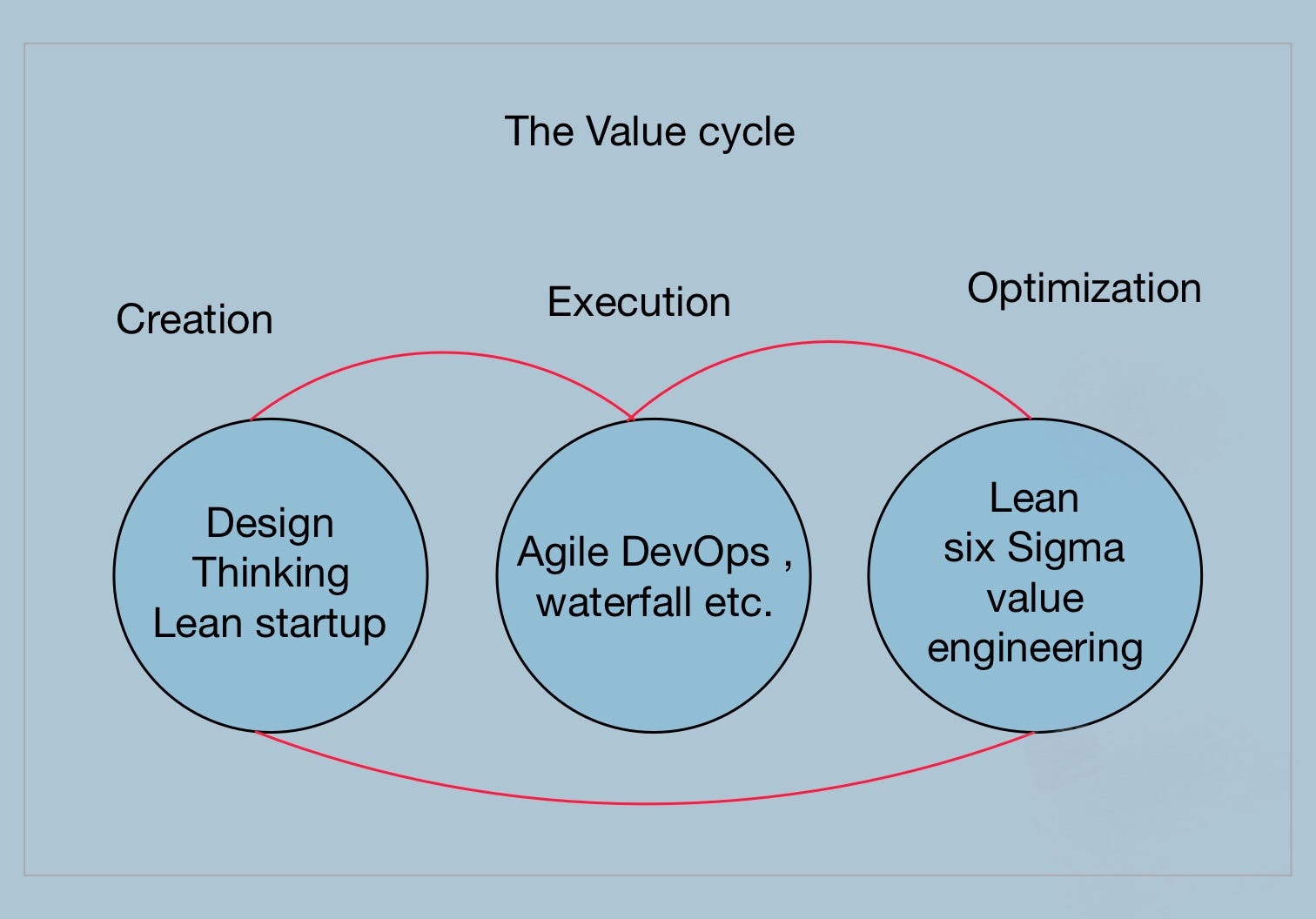My encounter with various problem-solving techniques and Design Thinking.
I have been practicing Design Thinking For almost 2 years and have been working with various organizations to help them evangelize Design thinking as a mindset and culture.
A common question I have been asked by people how is Design Thinking is different from other problem-solving methods like Six Sigma, lean, agile, etc., and if we as an organization have already invested in other such methods how and where would Design Thinking create value?
I, having practiced some of these methods before, see clear unique merit in the above question as the situation of these individuals is similar to that I was in 2 years back. Through this article, I have attempted to bring a perspective that might help some potential Design Thinking practitioners understand how various problem-solving techniques and design thinking are these methods unique and still marriable. Let’s understand this via two different frames:-
The comparative frame: –

The organization frame: –

Let’s dive into it further.
In the comparative frame, I have tried to give a comparative view of how these methods differentiate themselves and thus retain their unique positioning. All these methods have their own merits and are applicable differently in different situations. While Design thinking focuses on understanding human challenges and needs through deep empathy, it does not hardjacket itself into a rigid process. It gives enough space and room for human creativity to stay alive. Lean and Six Sigma both have a high process focus and look at solving problems through the process and quantitative data in the case of Six Sigma.
In the organization frame, I have tried to place these methods in the value lifecycle of an Organization. While Design Thinking and lean startup fit really well in the value creation space, methods like Agile, waterfall, DevOps, etc. contribute heavily to the value delivery space & finally methods like Lean, Six Sigma, Value engineering, etc. can help organizations to further optimize the performance and value of the solutions designed and delivered in the previous phases of the value lifecycle.
Through this article, I am not trying to grade the importance and value of these methods. Infant I feel all of them are equally important and play a vital role in designing a seamless & timeless organization.
Further when I tried to empathize with the people who were actually having this question. I could understand the actual challenge. The challenge is that a lot of organizations are looking at design thinking as just another business excellence method and have entrusted the responsibility to drive a design culture to the business excellence teams. However, I strongly believe and feel that the sponsorship and drive of Design Thinking should and has to be with the business leaders.
A strong business drive, a capable workforce, and an enabling organizational ecosystem are the secret sauce for successfully driving a design-led cultural change.
About the author, Ajay Aggarwal
A Haryanvi by origin, an entrepreneur at heart, and a consultant by choice, that’s how Ajay likes to introduce himself! Ajay is the Founding Partner at Humane Design and Innovation Consulting (HDI). Before starting HDI, Ajay founded the Design Thinking and Innovation practice at KPMG India. His 16+ years of professional career spans across various roles in product and service design, conducting strategy workshops, storytelling, and enabling an innovation culture. He has coached 50+ organizations and 2000+ professionals in institutionalizing design and innovation practices. He loves to blog and speak on topics related to Design Thinking, Innovation, Creativity, Storytelling, Customer Experience, and Entrepreneurship. Ajay is passionate about learning, writing poems, and visualizing future trends!
We at Humane Design strongly believe in the human ethos and draw inspiration from humans and other elements of nature to design innovative solutions for organizations of all sizes. We will be glad to be your success partner. Email us your requirements at explore@humaned.in.



